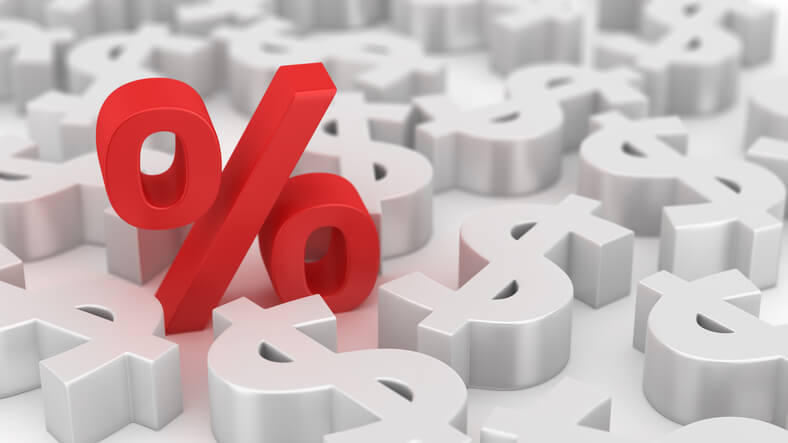The Fed’s Decision on Rates & The Impact
March 23, 2021 | Authored by Ryan C. Smith CFP®
 Published March 23, 2021 – On March 17, the Fed met to discuss their position on interest rates. They have decided to keep rates near zero through 2023, maintaining their goal to get to pre-pandemic unemployment rates while allowing for the economy to grow1. The Fed aims to stimulate the economy back to pre-pandemic levels. The main objectives, and means of doing this, is to keep interest rates low. It is important to know the impacts of low rates as the Fed continues their policy. While rising rates may have been welcomed by some as a positive sign that we are emerging from the worst of the pandemic, the Fed did not want to slow the economy down just yet. The goal of this piece is to cover the impacts near zero rates may cause for investors and the stock market.
Published March 23, 2021 – On March 17, the Fed met to discuss their position on interest rates. They have decided to keep rates near zero through 2023, maintaining their goal to get to pre-pandemic unemployment rates while allowing for the economy to grow1. The Fed aims to stimulate the economy back to pre-pandemic levels. The main objectives, and means of doing this, is to keep interest rates low. It is important to know the impacts of low rates as the Fed continues their policy. While rising rates may have been welcomed by some as a positive sign that we are emerging from the worst of the pandemic, the Fed did not want to slow the economy down just yet. The goal of this piece is to cover the impacts near zero rates may cause for investors and the stock market.
Broadly, these low rates are going to cause an increase in consumer spending, an increase in spending by businesses, therefore an increase in hiring, an increase in investment in equities and a decrease in savings. This is all good for the economy, until it isn’t, this will be covered later on. For now, the following will address the near-term impacts of the Fed’s decision.
Bonds:
Lower interest rates directly impact the bond market, as yields on everything from U.S. Treasuries to corporate bonds tend to decrease, making them less attractive to new investors. Bond prices move inversely to interest rates, so as interest rates shrink, the price of bonds rise. Likewise, an increase in interest rates sends the price of bonds lower. For bond traders, who invest or speculate for capital appreciation, rising rates are undesirable because they are reflected by lower prices. For bond investors, who buy bonds for the interest they pay, rising rates will be welcomed (barring a rise in inflation). What does this all mean? Investors who want a higher return will be forced to the equity markets.
Savings:
Money market and certificate of deposit (CD) rates, typically, will not move based on the Fed’s decision, since banks must compete with other interest-bearing investments that are available to investors and savers2. In theory, these low rates should reduce savings among investors and businesses because they cannot produce a high return on savings. The continued low rates may mean that anyone with a debt burden would rather seek to pay off their financial burdens to offset the higher variable rates associated with credit cards, home loans, and other debt instruments.
Company Profits:
When interest rates are near zero, it typically works against the banking sector since they’re not earning as much on the dollars they loan out. For most other businesses, low rates will help profitability. This is a result of the cost of capital required to expand their business is now low(er). Also, all of the consumer spending that will be happening because of the low rates typically increases revenue and eventually down to the profits. Low interest rates should be a lift to many businesses’ profits as they can acquire capital with cheaper financing and make investments in their operations for a lower price.
The Stock Market:
Unlike bond prices, which are inversely related to yields, stock prices might rise or fall with changes in interest rates. For stocks, it can go either way because a stock’s price depends on both future cash flows to investors and the discount rate, they apply to those expected cash flows. When interest rates remain low, the discount rate may decrease, which in turn could cause the price of the stock to rise. However, it is also possible that when interest rates change, expectations about future cash flows also change. Therefore, depending on the sign and magnitude of any cash flow effect and discount rate effect, theoretically it is unclear what the net effect of interest rate changes on stock prices should be.
While there is a lot of noise in stock returns, there has been no clear pattern between yield changes and subsequent stock returns historically. Keep in mind that many economic “experts” have been predicting rising interest rates for the past 10 years.
Clearly, the government is trying to discourage savings through t their intention of keeping rates low. They want spending to be the driver of the economy’s return to pre-pandemic levels. While, this increase in spending is good for the economy to rebound, the Fed has to be careful it does not lead to inflation. Inflation is when prices increase rapidly based on the surge in demand. So, the downside to near zero rates in the long-term may be higher inflation, which then will have to be combatted with higher interest rates. The Fed will have to keep a steady hand on the wheel so the solution does not become the problem.
After reading this, you may be thinking it is time for a new investment strategy. For investors who have a strong belief in the path interest rates will take in the future, the desire to change their investment strategy accordingly should be tempered with the notion that even with perfect knowledge of future rate changes, one will not have enough guidance about subsequent market returns. Instead, staying invested, in alignment with one’s risk profile, and avoiding the temptation to make changes based on short-term predictions may increase the likelihood of consistently capturing what the stock market has to offer in any interest rate environment.
For a printable copy of this article, please click here.
For more information, contact Ryan Smith at rsmith@dopkins.com.
* Dopkins Wealth Management, LLC is a registered investment advisor owned by the partners of Dopkins & Company, LLP.
1 Source: https://www.federalreserve.gov/monetarypolicy/fomcpresconf20210317.htm
2 Source: https://www.investopedia.com/articles/investing/010616/impact-fed-interest-rate-hike.asp

About the Author
Ryan C. Smith CFP®
Ryan provides financial solutions to individuals, trusts and businesses. His services include guidance to clients regarding financial planning, investments and portfolio analysis.

